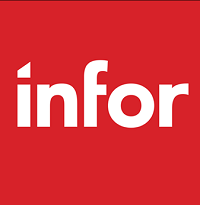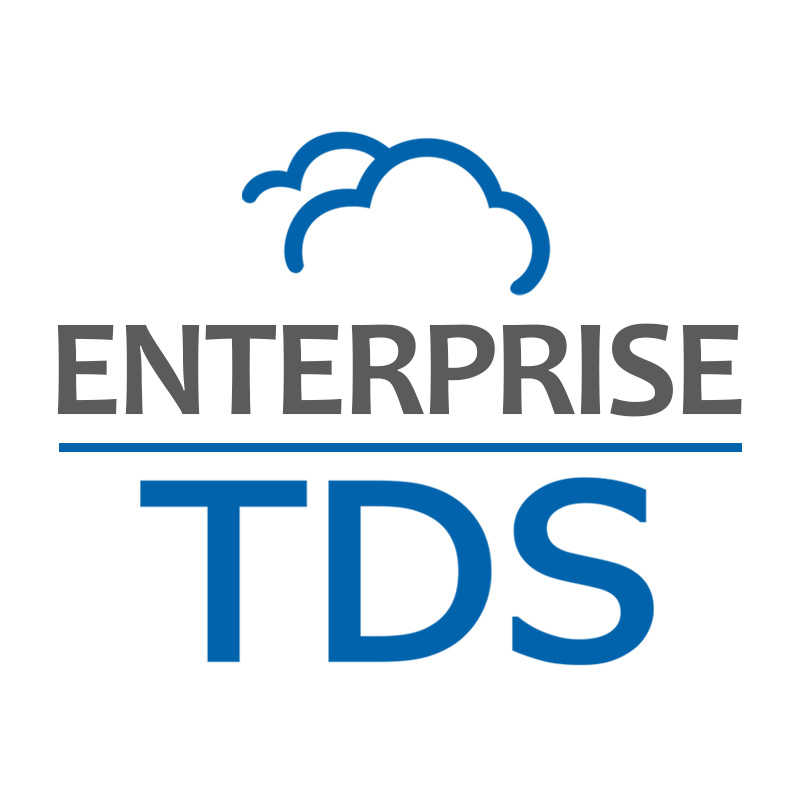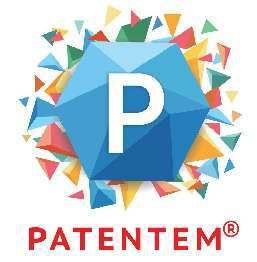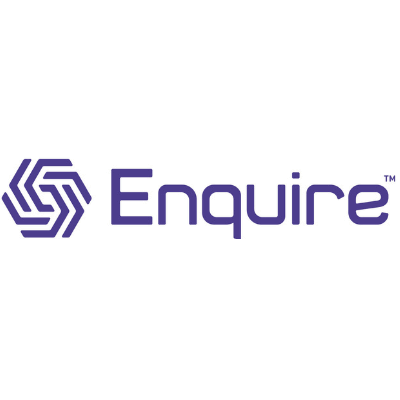What Is Government Software?
Government software, sometimes referred to as public sector software, is a class of technological solutions created especially to satisfy the particular demands and specifications of government organisations and agencies. It includes a vast array of software programs and systems that are used to automate and manage a number of government operations, including public safety, financial management, human resources, and citizen services, among others.
The capacity of government software to promote efficient communication and cooperation amongst many departments and agencies is one of its primary characteristics. This is accomplished by integrating several tools and modules that enable smooth reporting and data sharing. Furthermore, sophisticated security protections are frequently included in government software to guarantee the integrity and confidentiality of private government information.
This is essential to preserving the confidence and trust of the people who provide the government their personal information. Additionally, government software is made to adhere to stringent rules and guidelines established by the government, guaranteeing that all operations and procedures meet legal criteria. This reduces the possibility of expensive fines for non-compliance in addition to streamlining operations.
Budgeting and forecasting tools, document management systems, customer relationship management (CRM) software, and enterprise resource planning (ERP) systems are some of the most popular categories of government software. These tools are crucial for improving government decision-making, efficiency, and cost savings.
What Are The Recent Trends In Government Software?
Current Trends in Government Software: As governments everywhere work to become more effective, open, and citizen-focused, government software has seen a substantial development in recent years. Here are some noteworthy developments in government software that buyers should be aware of in light of technological advancements and the growing demand for digital solutions:
1. Cloud-Based Solutions: The move to cloud-based solutions is one of the main trends in government software. Governments can lower infrastructure costs, improve departmental communication, and store and retrieve data from any location via the cloud. Governments of all sizes find cloud-based solutions appealing because they provide enhanced security and scalability.
2. Automation And Artificial Intelligence (AI): These technologies are becoming more popular in the government sector because they have the ability to minimise errors, cut down on paperwork, and expedite procedures. AI-driven chatbots, for example, can respond to public enquiries, freeing up workers for more difficult jobs. Workflows that are automated can also increase productivity in fields like contract administration and procurement.
3. Open Data And Transparency: More and more governments are providing the public with structured, open data. This shift to transparency makes it possible for individuals, companies, and other groups to examine and use the data for a number of objectives, including pinpointing problem areas or coming up with creative fixes.
4. Mobile And Digital Solutions: Governments are implementing mobile and digital solutions to better reach citizens, as the majority of people now own smartphones. These solutions, which range from mobile-friendly portals for government service access to mobile apps for engagement and communication, are simplifying citizen-government interactions.
5. Cybersecurity And Data Privacy: Because governments are constantly at risk of cyberattacks, these issues have grown to be of utmost importance. Governments are therefore spending money on software programs with strong security measures to safeguard private information and lessen the danger of cyberattacks.
6. Geospatial Technology: Governments are increasingly using geospatial technology, such geographic information systems (GIS), to gather and examine data in order to make decisions. This makes it possible for governments to adopt data-driven policies and decisions and to better understand and plan for their communities.
Benefits Of Using Government Software
Government agencies may interact with people, manage operations more effectively, and make data-driven choices with the aid of government software. It has many advantages that can increase citizen participation, expedite procedures, and eventually boost government agencies' overall effectiveness.
1. Increased Efficiency: The capacity of government software to automate jobs and streamline procedures is one of its main benefits. For government organisations, this results in significant time and cost savings, allowing them to accomplish more with fewer resources. Employees may focus on more important activities by automating processes like data input, document management, and reporting.
2. Improved Citizen Engagement: A number of channels for communication between citizens and their government are offered by government software. This covers social media sites, smartphone apps, and internet portals. With the use of these tools, citizens can quickly and easily obtain information, submit requests, and offer comments. This degree of openness and accessibility contributes to increased public satisfaction and confidence in governmental organisations.
3. Data-Driven Decision Making: Government operations rely heavily on data, and making well-informed judgements requires having access to precise and up-to-date data. Agencies are able to track and analyse data in real-time because to the powerful analytics and reporting features that government software provides. Better decision-making is made possible by this, which also aids in pinpointing problem areas and assessing the results of initiatives and policies.
4. Better Security And Compliance: Security features like user authentication, encryption, and data backups are frequently integrated into government software. These safeguards guarantee that private information and data are protected from online attacks. Furthermore, the majority of government software conforms with industry standards and regulations, guaranteeing that agencies continue to operate legally.
5. Smooth Collaboration: When working on complicated projects with several departments and stakeholders, government agencies must collaborate seamlessly. A centralised platform for collaboration is offered by government software, enabling multiple teams to access and work together on documents and projects at the same time. Teams' coordination and communication are greatly enhanced as a result, producing more effective and efficient results.
Important Factors To Consider While Purchasing Government Software?
In order to be sure they are investing in the greatest government software for their company, purchasers should take into account a number of crucial variables.
1. Security And Compliance: Since government organisations handle a lot of sensitive data, security and compliance are of utmost importance. To protect sensitive data, it is essential to make sure government software complies with all security and compliance laws, such as GDPR or HIPAA.
2. Ease Of Use: Government software has to be simple and easy to use. Purchasing software that is simple to use and learn can ultimately save time and money because training and onboarding expenses can mount up quickly.
3. Customisation And Integration: A one-size-fits-all software solution is unable to satisfy the specific procedures and needs of government organisations. Selecting software that can be tailored to the agency's unique requirements and integrated with other current systems is crucial.
4. Scalability: The software requirements of government organisations may alter as they expand and change. To prevent future expensive replacements, it is crucial to choose software that is scalable and flexible enough to adjust to the organization's evolving needs.
5. Support And Maintenance: Selecting a vendor that provides dependable support and maintenance services is crucial because government software is an investment that must be made over an extended period of time. This covers training materials, technical support, and frequent software updates.
6. Vendor Reputation And Experience: Choosing a trustworthy and knowledgeable vendor is essential when buying government software. To learn more about the vendor's reputation and degree of client satisfaction, look for case studies, evaluations, and testimonials from other government organisations.
7. Total Cost Of Ownership (TCO): In addition to the original purchase price, customers should think about the total cost of ownership over the course of the software's life. This covers things like setup, instruction, continuing support, and any possible costs for new features or software updates.
8. Future-Proofing: Government software ought to be flexible enough to adjust to new developments in technology and modifications in laws. To be sure the software will continue to satisfy their needs in the long run, buyers should take into account its innovative history and future development plans. Customers can choose government software that will support the goals and operations of their organisation by carefully weighing these crucial elements.
What Are The Key Features To Look For In Government Software?
Finding important qualities that can guarantee government software's efficacy and efficiency in fulfilling the demands of the government sector is crucial when thinking about buying it.
When looking into government software solutions, the following are the most important qualities to consider:
1. Security And Compliance: Because government software frequently handles sensitive data, it must adhere to stringent security and data protection regulations. Seek out software that complies with government requirements like FISMA and HIPAA and has sophisticated security measures.
2. Customisation And Integration: Since each government agency has different requirements and procedures, it is essential to select software that can be easily modified and included into current systems. This feature makes it possible to manage different activities and workflows in a more specialised and effective way.
3. Cooperation And Communication: Government operations depend on efficient cooperation and communication. To promote effective departmental and team cooperation, look for software that has capabilities like work assignment, real-time messaging, and internal communication tools.
4. Reporting And Analytics: Every day, government organisations handle enormous volumes of data. Thus, having software that can produce thorough reports and analytics is crucial for precisely tracking and assessing performance and advancement. Making data-driven decisions and recognising areas for development can both benefit from this capability.
5. Mobile Version: Having software accessible while on the go is crucial in the current digital era. To enable employees and authorities to access information and complete tasks from any location, look for government software that is mobile-friendly or multi-device compatible.
6. Scalability: Software that can grow and change with government organisations' operations and needs is essential. Select software that is adaptable and able to manage growing workloads and data as the agency expands.
7. Ease Of Use: Employees can save time and lower their learning curve using user-friendly software. To guarantee easy adoption and usability, look for software with an intuitive design and straightforward navigation. You may choose the best government software that fits your agency's particular requirements and demands while fostering efficiency, security, and teamwork by taking into account these important qualities.
Why Do Businesses Need Government Software?
Because government software may significantly improve operations and overall success, businesses require it for a variety of reasons. First of all, government software is made to automate and simplify regulatory compliance procedures, which makes it simpler for companies to abide by rules and laws. This enhances their credibility and reputation in the sector in addition to assisting them in avoiding penalties and fines.
Additionally, government software provides features like vendor management, contract management, and procurement—all of which are critical for companies that collaborate with government organisations. From managing vendor connections to bidding on contracts, these capabilities help expedite the entire government working process, which eventually boosts productivity and profitability.
Furthermore, government software can give companies instant access to crucial information and reports, enabling them to stay informed about policy or regulation changes and make well-informed decisions. Businesses may find that this degree of openness and exposure is essential, particularly those operating in highly regulated sectors. Additionally, by automating processes that would otherwise need to be completed by hand, government software can assist businesses in saving time and money.
Employees may now concentrate on other crucial duties, which boosts output and lowers expenses for the company. Businesses can gain a lot from integrating government software into their operations overall since it enhances compliance, boosts productivity, gives quick access to data, and eventually increases industry performance. Any company that works with government organisations would be prudent to invest in government software given the many benefits it provides.
How Much Time Is Required To Implement Government Software?
Numerous factors, such as the particular software being used, the intricacy of the procedures it will be used for, and the resources and experience of the implementing team, can affect how long it takes to adopt government software. Government software implementation often takes a few weeks to many months to complete.
The planning and preparation phase is a crucial factor to take into account when estimating the timeframe for deploying government software. This covers tasks including gathering requirements, interacting with stakeholders, and tailoring the software to the particular requirements of the government agency. Depending on the intricacy, this phase may take two to eight weeks.
The real implementation procedure can start after the program has been modified and is prepared for deployment. This include setting up the program, installing it, and instructing employees on its proper usage. The size of the company and the number of users that require training will determine how long this phase takes. Testing and fine-tuning the software to make sure it is operating correctly and fulfilling the organization's needs constitutes the last phase of implementation.
An extra one to two weeks may be needed to finish this. In general, government software implementation might take anywhere from eight weeks to six months. Establishing a reasonable timetable based on their unique requirements and available resources requires strong collaboration between government agencies and the software provider. Organisations may guarantee a seamless transition to their new software system by meticulously organising and overseeing the installation process.
What Is The Level Of Customization Available In Government Software?
The degree of customisation available for government software can change based on the particular demands and specifications of the company. While some software may have more customisation choices, others may offer a high degree of customisation that permits significant changes and customised features. The kind of software is one important element that influences the degree of customisation possible.
For instance, because enterprise resource planning (ERP) software is designed to be utilised by multiple departments within a government organisation, it usually has a larger degree of customisation. However, software created for a particular purpose, like case management or tax collection, could offer fewer customisation choices. The budget is another crucial consideration.
Government organisations must assess their needs and priorities in order to evaluate the degree of customisation they need, as customisation is frequently expensive. Apart from these variables, the software vendor also affects the degree of customisation. While some providers might offer more flexibility and support for special requirements, others can have a fixed structure that restricts customisation.
Before making a purchase, government organisations must make sure that software providers understand their unique needs and expectations for customisation. In addition to allowing for any necessary adjustments, this can help guarantee that the software fits their needs and budget. Overall, there can be a wide range of customisation options in government software, so it's critical for purchasers to thoroughly assess their particular requirements and successfully convey them to software providers in order to guarantee they get the best option for their company.
Which Industries Can Benefit The Most From Government Software?
Government software is intended to support and expedite a number of public sector procedures. It provides many services, including financial management, document management, data analysis, and record-keeping. The usage of government software has become crucial as the need for efficiency and openness in government processes grows.
Which sectors, however, stand to gain the most from this specialised software? Let's investigate.
1. Government Departments And Agencies: The government itself is the most evident sector that stands to gain from government software. Local, state, and federal government departments and organisations handle a lot of data and intricate procedures. These organisations can store and arrange data safely, automate processes, and guarantee regulatory compliance with the aid of government software. In addition to streamlining processes, this enhances departmental cooperation and communication.
2. Emergency Services And Public Safety: Critical and time-sensitive jobs are part of the emergency services and public safety sectors, including police and fire departments. These organisations can use government software to help with incident tracking, resource dispatch, and call log management. Additionally, technology makes it possible for them to communicate with other agencies in real time, which facilitates a coordinated emergency response.
3. Medical Care: Government software can help with data management and compliance in the highly regulated healthcare sector. Healthcare providers may enhance patient care and streamline operations with features including insurance claim processing, patient portals, and electronic health records. Government software also helps in managing vaccine delivery and monitoring public health issues like disease outbreaks.
4. Instruction: Government software has emerged as a useful tool for educational institutions as a result of the expanding use of technology in the classroom. It facilitates the administration of financial aid procedures, class schedules, grading, and student data. Data analysis tools are now included in government software, allowing teachers to make data-driven choices and raise educational standards.
5. Infrastructure And Transportation: Numerous government organisations handle enormous volumes of data for everything from infrastructure maintenance to traffic control. Better decision-making and more economical solutions can result from the management and analysis of this data with the help of government software. Additionally, it aids in the planning and implementation of transportation projects, including public transportation systems and road development.
Conclusion
In conclusion, it's critical to thoroughly assess your unique demands and requirements when thinking about buying government software. Examine the features, compatibility, and costs of the many options that are available. Take into account the software provider's reputation and client testimonials. Make sure the program can manage possible data privacy and security issues and has a solid support mechanism in place.
You can select government software that best meets the needs of your company, increases productivity, and permits effective and efficient governmental operations by adhering to these recommendations and taking the time to carefully consider your options. Keep in mind that making the correct software investment might be crucial to success and satisfying the requirements of the constantly changing regulatory environment.






















